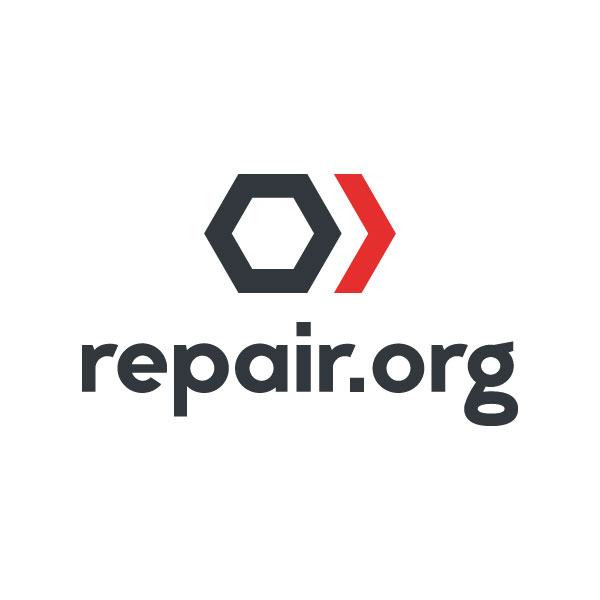Minnesota Right to Repair
In 2023, Minnesotans approved Right to Repair legislation pertaining to Digital Electronic Equipment and Appliances, set to take effect on July 1, 2024. This groundbreaking law mandates that manufacturers provide access to necessary documentation, parts, and tools for both consumers and independent repair facilities. It encompasses devices that were either manufactured or initially sold within the state starting from July 1, 2021.
Manufacturers of electronics and appliances sold above $99.99 must ensure the availability of essential repair resources — including parts, tools, and updated documentation — to product owners and independent repair services under fair and reasonable conditions. This obligation lasts for a minimum of seven years following the product's final manufacturing date, surpassing any warranty durations. For products whose price ranges between $50 and $99.99, the obligation period is limited to three years.
The Minnesota Right to Repair law excludes Motor Vehicles, Video Game Consoles, Medical Equipment and Devices, Off-Road Vehicles, Marine Vehicles, Recreational Vehicles (and Similar Products), some Farm Equipment, Lawn & Garden Equipment, Portable Generators, and Cybersecurity Tools.
3 facts on right to repair in Minnesota
Repair Saves Money
Minnesota households are expected to save an average of $330 per year by repairing phones, computers, and appliances instead of purchasing new ones, addressing the financial burden placed on consumers due to restrictive repair practices by manufacturers .
Repair is popular
There is overwhelming support for the Right to Repair in Minnesota, with 79% of residents surveyed backing legislation that would require manufacturers to provide the necessary tools, parts, and information for product repairs, showcasing a public demand for more repair-friendly policies.
repair saves the planet
Every day in the state of Minnesota thousands of cell phones are discarded, adding to our 6.9 million tons of e-waste per year. Repairing products instead of throwing them away can help reduce the amount of waste that ends up in landfills, which can help reduce the amount of greenhouse gases released into the atmosphere.
Here’s how this groundbreaking law stands to benefit consumers, the economy, and the planet:
Consumer Empowerment: Minnesota’s Right to Repair law is a game-changer for consumer empowerment and financial savings. By breaking down the monopolistic barriers erected by manufacturers—such as proprietary parts and software locks—this legislation enables Minnesotans to choose their repair provider or to perform repairs themselves. This newfound freedom promises significant economic benefits, notably the potential for households to save money. According to the U.S. PIRG study “Repair Saves People Big”, repair could save up to $330.23, per household.
Beyond individual savings, this law fosters a competitive repair market, stimulating local economies and encouraging a sustainable culture of reuse over replacement. In essence, the Right to Repair empowers Minnesotans with the autonomy over their devices they rightfully deserve, making repairs more accessible, affordable, and beneficial for the environment.Repair Is Necessary and Popular: Consumer Reports reveals that an overwhelming majority of Americans (81%) have found themselves replacing items due to malfunction, and over half (53%) have done so earlier than anticipated, hindered by the difficulty in locating a satisfactory repair service. This frustration, coupled with the often prohibitive costs of repairs, has led a significant majority (84%) to endorse policies mandating manufacturers to provide access to repair manuals and parts to both independent technicians and owners alike.
In Minnesota, this sentiment resonates strongly, with Repair.org reporting that 79% of Minnesotans are in favor of Right to Repair legislation. This broad-based support underscores the public's desire for more sustainable consumption options and the empowerment to choose repair over replacement, reflecting a nationwide call for change towards greater repairability and longevity of products.Repair Benefits the Environment: The increase of electronic waste presents a significant environmental challenge. On average, Americans replace their cell phones every 2 to 3 years and their computers every 4 to 5 years, contributing to a cycle that demands intensive rare earth mining, generates greenhouse gas emissions, and produces hazardous waste. Daily, over 400,000 cell phones are thrown away in the U.S., with thousands of these in Minnesota alone. Of these discarded devices, merely a third are recycled, with certain materials, like plastics, being non-recoverable. The remainder ends up in landfills, leaking toxic substances that pose risks to our health.
The solution lies in repairing and extending the life of our electronics. Despite this, manufacturers continue to push for annual upgrades, often designing devices to be difficult to repair. This business model of consumption and disposal is not just unsustainable; it disregards the energy, materials, and labor invested in producing these devices. Creating a future where we prioritize repairing, salvaging, and refurbishing our electronics is crucial for environmental sustainability. Adopting a circular economy, where resources are reused and conserved, is essential. Repairing electronics is a key step towards this goal, ensuring a healthier planet by reducing waste and conserving resources.
Who supports right to repair in minnesota?
what the law requires manufacturers to provide
Documentation
Comprehensive instructions for routine care, troubleshooting issues, and repairing your device’s components.
Parts
Essential components available to fix any parts prone to wear or damage.
tools
Specialized tools to perform maintenance, diagnostics, and repairs.
Key Dates
July 1, 2021
Applicable to Most Consumer Electronics and Appliances Retroactively
July 1, 2024
Effective Date
Penalties and enforcement: Consequences of Non-Compliance
If manufacturers fail to supply necessary repair resources like documentation, parts, or tools to device owners or independent technicians, they may be in violation of the Right to Repair law. Additionally, manufacturers could be infringing upon the law if the provided resources come with unreasonable conditions, such as excessive costs or unreasonable delays.
Minnesota’s Right to Repair Act gives the Minnesota Attorney General the authority to investigate and enforce violations. Consumers are also able to bring a private claim for an unlawful practice against manufacturers under the Minnesota Deceptive Trade Practices Act. Penalties for non-compliance may include fines of up to $20,000 per violation.
If you have reason to believe a manufacturer is not adhering to the Right to Repair legislation, we urge you to file a complaint through the link below.
You can also report a violation to the Federal Trade Commission, who accepts reports of fraud, scams, and bad business practices. You may file a report form on the FTC website here: https://reportfraud.ftc.gov/#/. The FTC does not resolve individual reports, but uses reports to investigate cases.
Right to Repair RESOURCES FOR CONSUMERS
Now that Right to Repair is the law of the land in Minnesota, consumers can take advantage of a variety of resources. We’ve compiled a few to help get you started on your repairs. Expect more to become available as the law is implemented and manufacturers come into compliance.
DIY Repair
Repairing our stuff benefits the environment, the planet, and the local economy. It also benefits you personally! When you repair a device, you build confidence, learn patience, and develop a skillset that will help you repair more devices. Think of DIY repair as a learning opportunity. Practice makes perfect, and practicing repairs teaches design, engineering, and how stuff works.
Companies like iFixit offer free DIY repair manuals for tens of thousands of products. Manufacturers like Framework, Fairphone, Motorola, and HMD have also started to make DIY repair a core part of their product support.
FIND A LOCAL REPAIR SHOP
Repair jobs are local jobs, and thousands of locally owned and operated small and medium repair businesses have popped up in the last few years. Choosing a local repair business supports your local economy, and can save you money. Repair shops often can charge less than an authorized repair center through a manufacturer and they can fix what authorized repair can’t or won’t.
To find a local repair shop, use a local business directory in your community.
Right to Repair RESOURCES FOR REPAIR BUSINESSES
Right to Repair RESOURCES FOR MANUFACTURERS
Under the Right to Repair law, manufacturers are obligated to facilitate repairs. While this might appear overwhelming for some businesses, achieving compliance is straightforward. Manufacturers can readily extend the capabilities they offer to authorized repair centers. In cases where a manufacturer lacks a service center, several alternatives are available.
Build It From Scratch
Companies such as Fairphone and Framework have designed their products prioritizing ease of part replacement, making them naturally compliant with repair regulations. This approach is particularly feasible for new enterprises. Yet, for established corporations, initiating a repair-friendly platform can present challenges. The shift requires a cultural transformation towards openness and away from tight control, along with overcoming logistical and data management hurdles.
Use a third-party network
Apple's choice to partner with a third-party service for its Self Service Repair program illustrates another pathway, even if it deviates from the usual Apple finesse. Similarly, Samsung's collaboration with local repair services like uBreakiFix shows how outsourcing can effectively meet repair requirements—providing parts, tools, and guides without significant complications.
Create a Repair Ecosystem
For manufacturers interested in exploring how to build or enhance a repair ecosystem, further resources and guidance are available. iFixit, a leader in the repair community, offers a comprehensive suite of services tailored to support manufacturers at every step of the process. From repairability assessments to technical documentation and parts distribution, iFixit's expertise can help manufacturers navigate the complexities of creating products that are both durable and repairable.
Learn more about iFixit's offerings and how they can assist your company in developing a robust repair ecosystem by visiting iFixit's website.
Please use the form below if you have any questions or concerns.




















